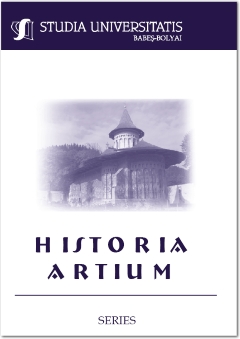“LATINIZAREA” BISERICII ROMÂNE UNITE CU ROMA. CONTRIBUŢII DOCUMENTARE VATICANE, SECOLELE XVIII-XX
“THE LATINISATION” OF THE ROMANIAN CHURCH UNITED WITH ROME. VATICAN DOCUMENTARY CONTRIBUTIONS, 18TH – 20TH CENTURIES
Author(s): Ina Roşu VădeanuSubject(s): Fine Arts / Performing Arts
Published by: Studia Universitatis Babes-Bolyai
Keywords: Transylvania; Greek-Catholic architecture; aesthetic identity; latinisation; Vatican archives.
Summary/Abstract: “The Latinisation” of the Romanian Church United with Rome. Vatican Documentary Contributions, 18th – 20th Centuries. The archival research performed in two different Roman institutions, Archivio Segreto Vaticano and Archivio storico di Propaganda Fide, was focused on identifying Vatican’s assimilation policies, i.e. latinisations, implicitly cultural and impacting on Romanian Church United with Rome’s architectural and aesthetic profile. The archival research clearly revealed that the unionist plans would always follow approximately the same theoretical frame, with the Wallachians in Transylvania being included in the Greek rite Eastern family, without being a chapter with separate theory and rules within the Catholic Reconquista of the East. The Congregation [for the propagation of Faith] records - documents that cover seamlessly about 250 years (1622-1821), refute the latinisation thesis, i.e. Vatican’s intention to unify the local Greek-Catholic rite of Eastern filiation, including its customs, ecclesiastical body discipline and religious holidays calendar, with those of the Roman Church. However, the dysfunction occurs in Transylvania, like in other countries, at the lower executive hierarchy level, as the unionist projects the high hierarchs in Rome designed theoretically were implemented with the help of local religious orders and zealous bishops of Latin rite. Such actions, unapproved officially in Rome, cannot be considered elements of a sustained latinisation policy, without which the results could have only been ephemeral. At construction level, without a general latinisation policy, the headquarters could raise no claims for formal regulations, clear constructive and plastic patterns to follow, similarly to the Council of Trent.
Journal: Studia Universitatis Babes Bolyai - Historia Artium
- Issue Year: LVI/2011
- Issue No: 1
- Page Range: 91-107
- Page Count: 17
- Language: Romanian

